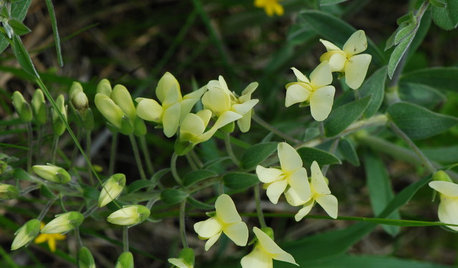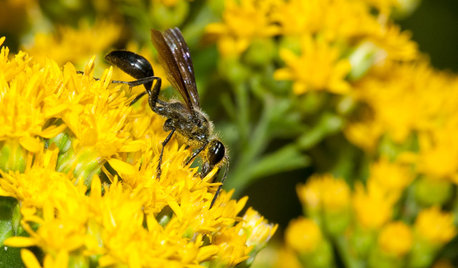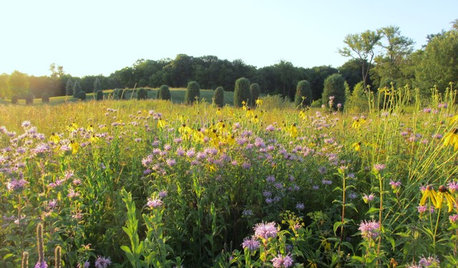Unwanted cross pollination
jbest123
15 years ago
Related Stories

NATIVE PLANTSPlant These Fall-Flowering Natives in Early Summer for Pollinator Love
These 3 groups of plants will support masses of beneficial insects come autumn
Full Story
FLOWERS AND PLANTSPlant Baptisia Bracteata for Blooms Pollinators Will Love
Longbract wild indigo is great in dry soil, and its spring flowers attract butterflies and bumblebees
Full Story
GARDENING GUIDESMeet the Grass-Carrying Wasp, a Gentle Pollinator of Summer Flowers
These fascinating insects nest in wood cavities and hollow plant stems
Full Story
EDIBLE GARDENSGarden BFFs? Why Your Vegetables Are Begging for Companion Plants
Foster friendships among plants for protection from pests, pollination support and color camaraderie
Full Story
GARDENING AND LANDSCAPINGBid Bad Garden Bugs Goodbye and Usher In the Good
Give ants their marching orders and send mosquitoes moseying, while creating a garden that draws pollinators and helpful eaters
Full Story
CURB APPEAL77 Front Doors to Welcome You Home
Crossing the threshold is an event with these doors in a gamut of styles
Full Story
GARDENING GUIDESAttract Hummingbirds and Bees With These Beautiful Summer Flowers
Roll out a welcome mat for pollinators to keep your landscape in balance and thriving
Full Story
FARM YOUR YARDHello, Honey: Beekeeping Anywhere for Fun, Food and Good Deeds
We need pollinators, and they increasingly need us too. Here, why and how to be a bee friend
Full Story
GARDENING GUIDESWhat Prairies Teach Us About Garden Design
Wild spaces offer lessons for home gardeners about plants, pollinators and the passage of time
Full Story
GARDENING GUIDESGreat Design Plant: Asclepias Incarnata for a Butterfly Garden
Beautiful swamp milkweed makes it easy to help monarchs and other pollinators in eastern U.S. gardens
Full StoryMore Discussions






fruitgirl
jbest123Original Author
Related Professionals
Rancho Palos Verdes Landscape Architects & Landscape Designers · Rossville Landscape Architects & Landscape Designers · Bethlehem Landscape Contractors · Edmond Landscape Contractors · Lynn Landscape Contractors · Mesa Landscape Contractors · Newnan Landscape Contractors · Ridgewood Landscape Contractors · Soddy Daisy Landscape Contractors · Waldorf Landscape Contractors · Wickliffe Landscape Contractors · Cedar Park Carpenters · Waltham Carpenters · Chandler Fence Contractors · Verona Fence Contractorsfruitgirl
jbest123Original Author
farmfreedom
keking
catamount1957_yahoo_com
zen_man